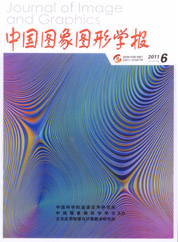
利用图像质量评估空气质量的新方法
刘皓挺1,2, 李凡2, 徐凤刚2, 卢汉清3(1.中国科学院自动化研究所模式识别国家重点实验室,北京 100190;2.中国航天员科研训练中心,北京 100193;3.中国科学院自动化研究所模式识别国家重点实验室,北京100190) 摘 要
图像质量的差异能够反映拍摄环境成像条件的差异。提出一种利用视频监控图像序列评估空气质量的新方法:首先定义3类图像质量评估参数,即图像的噪声亮度比、对比度以及模糊度来度量当前图像的质量;其次对监控图像序列连续帧数据计算上述质量参数,并将计算结果在时间轴上顺次连接形成3类时间序列数据;再次对上述时间序列数据中的噪声亮度比采用Gompertz增长类型扩散过程模型进行建模与分析,同时对对比度、模糊度参数使用降趋势波动性分析(DFA)方法进行分析;最终通过对Gompertz模型以及DFA模型的模型参数的分析,可以评估与解释空气质量程度的好坏。比较了晴天与雾天条件下模型变化趋势的不同,大量实验亦表明此方法的有效性。
关键词
The evaluation of air quality using image quality
() Abstract
The intensity change of the image quality (IQ) can reflect the photography condition change of a CCD camera. A novel air quality evaluation method, which only uses the surveillance image, is presented in this paper. First, different IQ metrics, i.e. the noise brightness ratio, the contrast level and the blur level, are employed to evaluate the IQ. Then we use them to build different time series data. After that we utilize a Gompertz type diffusion process (GTDP) of stochastic growth and the detrend fluctuation analysis (DFA) method to analyze and fit the trend of these series above. Finally, we can use the parameters of the GTDP model and the DFA model to evaluate and classify the IQ change level of different atmospheres. Some experiment data, which are captured in a solar day and a misty day, are utilized to verify the validity of our method.
Keywords
|



 中国图象图形学报 │ 京ICP备05080539号-4 │ 本系统由
中国图象图形学报 │ 京ICP备05080539号-4 │ 本系统由